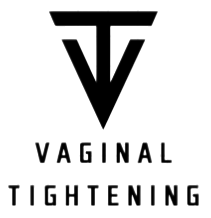In the ever-evolving landscape of online advertising, the rise of ad cloaking presents a tantalizing yet controversial approach to capturing consumer attention. Ad cloaking involves presenting different content to search engines and users, typically to bypass restrictions and enhance visibility. While it may seem like a clever strategy for maximizing ad reach, it raises ethical questions and potential legal ramifications. One of the primary drivers behind the adoption of ad cloaking is the fierce competition in digital advertising. With billions of dollars spent annually on online ads, advertisers are constantly seeking innovative ways to stand out. Traditional methods, such as keyword optimization and targeted campaigns, often fall short in an increasingly saturated market. By cloaking ads, advertisers can create a facade that appears to meet platform guidelines while promoting content that may otherwise be restricted or overlooked.
For example, an advertisement for a product deemed too controversial or regulated such as crypto currency or certain health supplements might present benign content to search engines while displaying a more aggressive sales pitch to users. This duality can significantly increase click-through rates and, conversion rates. However, this practice poses significant risks, as search engines like Google have stringent policies against deceptive practices. If caught, advertisers face penalties that can range from account suspension to permanent bans, making the potential rewards of cloaking a high-stakes gamble. Moreover, ad cloaking not only risks individual accounts but also threatens the overall integrity of digital advertising ecosystems. As consumers become more aware of these tactics, they may develop distrust towards ads, leading to ad blindness and a decrease in engagement. Furthermore, the effectiveness of cloaking diminishes as platforms become more adept at detecting deceptive practices.
This ongoing cat-and-mouse game could result in a temporary advantage for those who use cloaking, but it may push the industry toward more stringent regulations and monitoring. In light of these challenges, the future of ad cloaking remains uncertain. While some view it as a necessary evolution in high-stakes online advertising, others advocate for transparency and ethical marketing practices. As technology advances and consumer awareness increases, the balance between innovation and integrity will be pivotal in shaping the future landscape of online advertising. while cloaking guide might offer short-term gains in visibility and engagement, its long-term viability is questionable. The future of high-stakes online advertising may hinge on finding more sustainable and ethical ways to connect with consumers, rather than resorting to tactics that undermine trust and integrity. As the digital advertising arena continues to transform, advertisers will need to navigate these complexities carefully, weighing the risks and rewards of their strategies.
